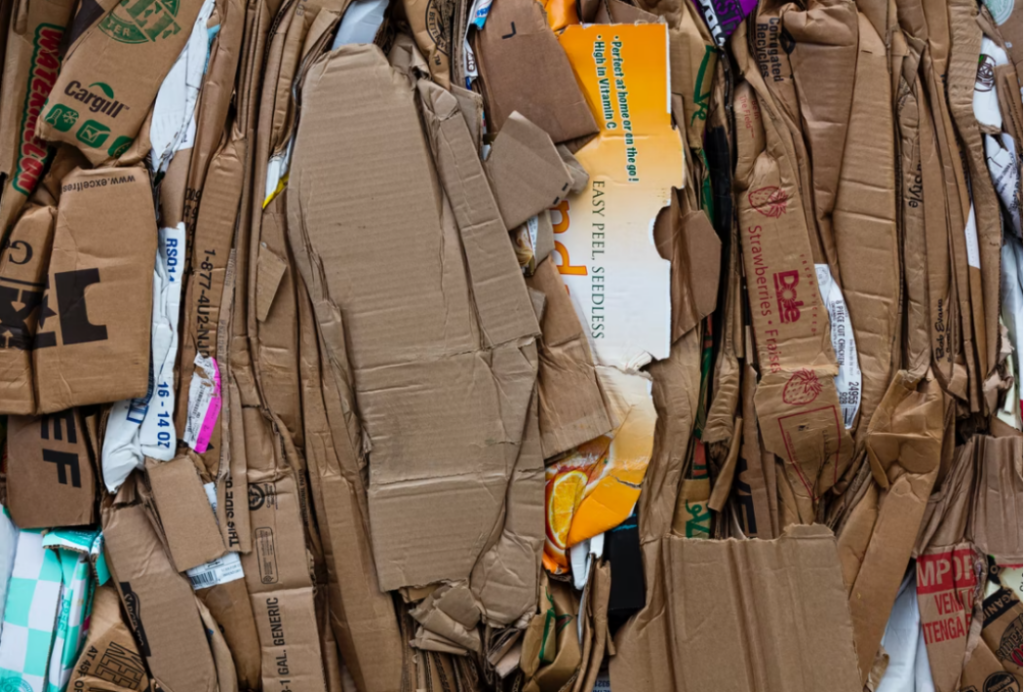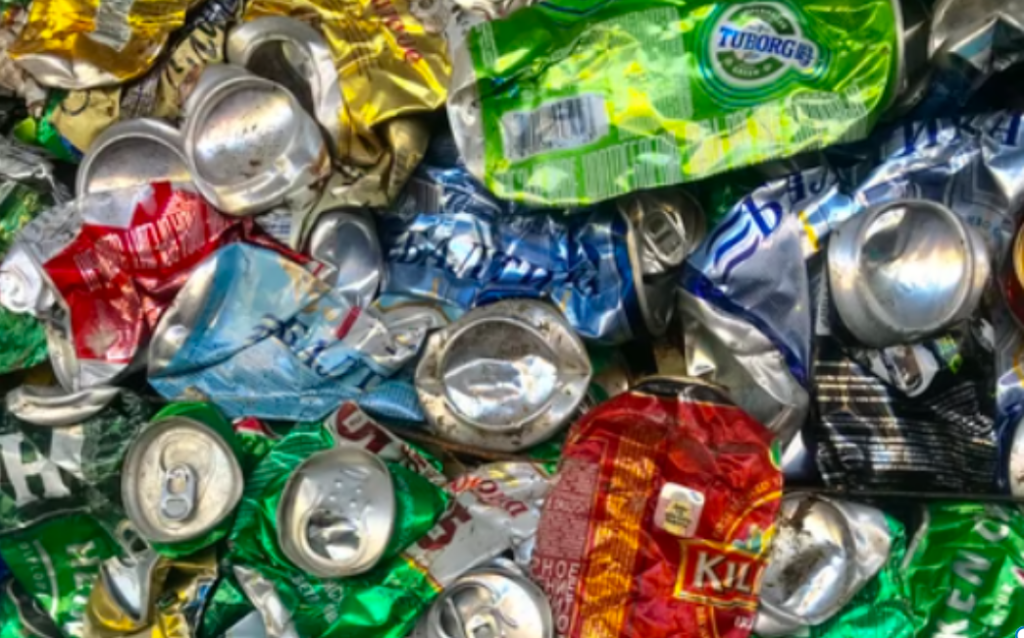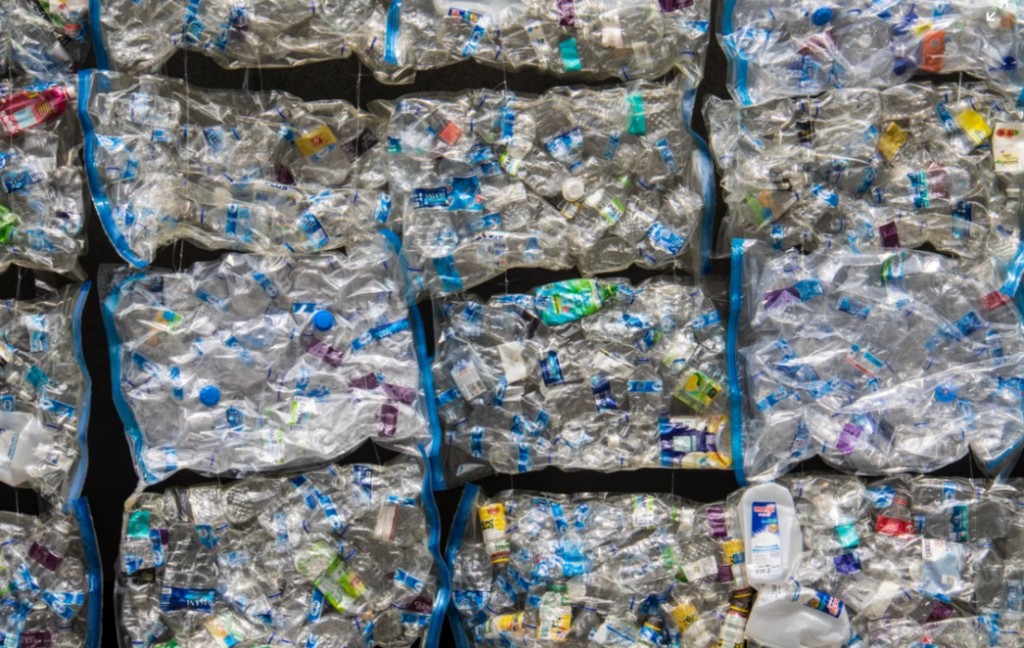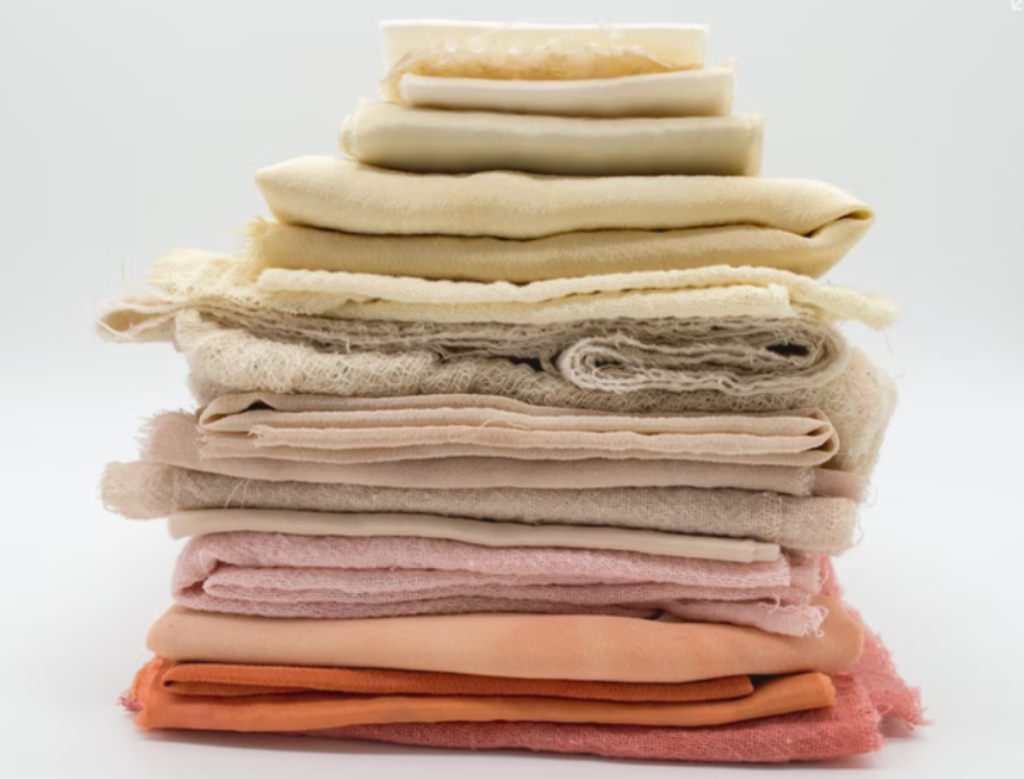When it comes to handling a high volume of recyclables, there’s no better solution than a recycling baler. They provide their users with several benefits including lower disposal costs, improved logistics, and sustainability credentials. So, what materials can you bale? Lets take a look at some common recyclable materials such as Cardboard, Aluminum, Plastics, & Textiles.
Can You Bale Cardboard?
Yes, you can! Cardboard is one of the most commonly baled materials in the recycling industry. It is a durable material that can be easily compressed into dense bales. Baling cardboard can help businesses and organizations reduce their waste volume, save storage space, and earn revenue through recycling. Cardboard bales can be transported to paper mills, where they are processed and turned into new products, such as paperboard, packaging materials, or even furniture. If your business produces a high volume of cardboard waste then you should definitely consider baling it. However, it’s important to note that cardboard should be clean and free of any contaminants, such as food, grease, or liquids, before it is baled. Contaminated cardboard can lead to quality issues or even safety hazards during the baling process.

Can You Bale Aluminum?
Yes, you can! It’s a light a malleable metal, which makes it an ideal material for a baler. In fact, balers may be solutions for several types of non-ferrous metals, but aluminum is the most common. Aluminum is one of the most valuable and commonly recycled materials in the world. Baling aluminum can help businesses and organizations reduce their waste volume, save storage space, and profit through recycling. Aluminum bales can be transported to smelters, where they are melted down and used to create new products, such as beverage cans, car parts, or even airplanes.

Can You Bale Plastic?
Yes, you can! Most recycling facilities will not take plastics unless they are baled. While recycling balers can generally handle all plastic types, the most ideal types are ones that hold their shape well like Polyethylene Terephthalate (PET) and High-Density Polyethylene (HDPE). Thankfully, these are also the types of plastics that recycling facilities are most likely to pay for since the process to recycle them is relatively easy and economically viable. Baled plastics can be turned into a variety of new products, depending on the type of plastic and its quality. These products include containers, packaging, plastic lumber, textiles, furniture, and even automotive parts.

Can You Bale Textiles?
Yes, you can! Items like clothing, rugs, sheets, towels, and curtains a great materials to use a baler for. These bales can be transported to textile recycling facilities, where the materials are sorted, graded, and processed into new products. New products include clothing items, cleaning cloths, insulation materials, yarn, and even car seat padding. You can also bale textiles strictly for transport purposes to ship clothes and other textiles overseas.
Unfortunately, balers are currently underutilized for this waste stream. The recycling rate is fairly poor. According to the EPA, we produce about 17 million tons of used textile waste annually in the United States and 85% of that waste ends up in landfills. We’ve got a lot of work to do in terms of generating awareness for textile recycling possibilities considering that textiles are one of the fastest growing waste streams category in the country. Balers can play a major role in keeping this material out of landfills.

Are There Any Recyclable Materials That You Can’t Bale?
While quite versatile, recycling balers have limitations just like any other machine. Before you start baling materials, it’s crucial to have a clear understanding of which materials are suitable for baling and to follow proper safety protocols to prevent accidents or equipment damage. You can’t bale every recyclable material. They’re not a solution for every type of waste. Recyclable items that you can’t bale include glass, ferrous metals (steel, cast iron, ect.), organic waste and anything explosive. It’s also important to note that you should only bale one material at a time. Separating materials is crucial. Baling plastic and aluminum together would cause contamination, making it unlikely that a recycler would pay for your bale.
Cardboard, aluminum, plastics, and textiles are the most common applications for a baler but are not an exhaustive list. If you have a recyclable material that you need a solution for but don’t see listed here, reach out to us. We’ll help you determine if a recycling baler is right for your needs.
